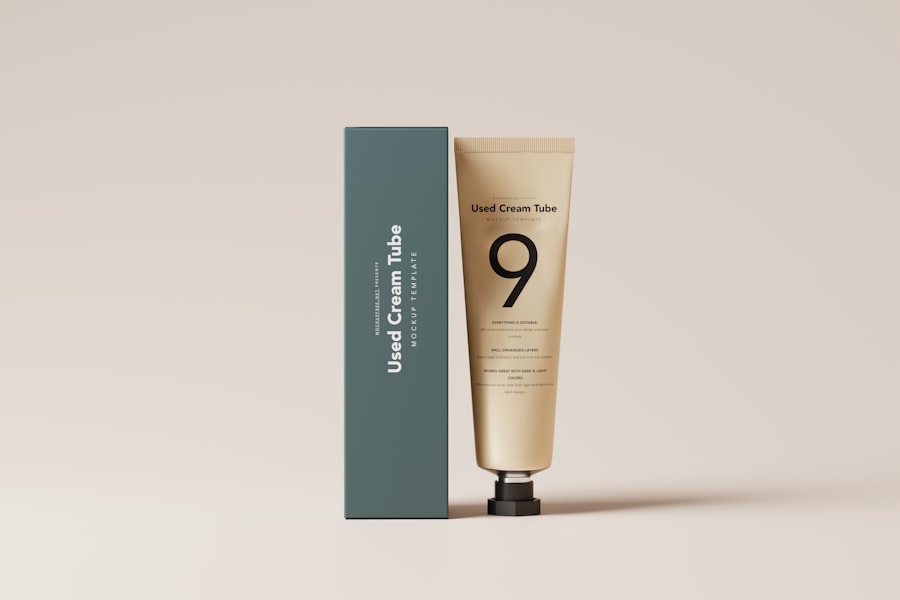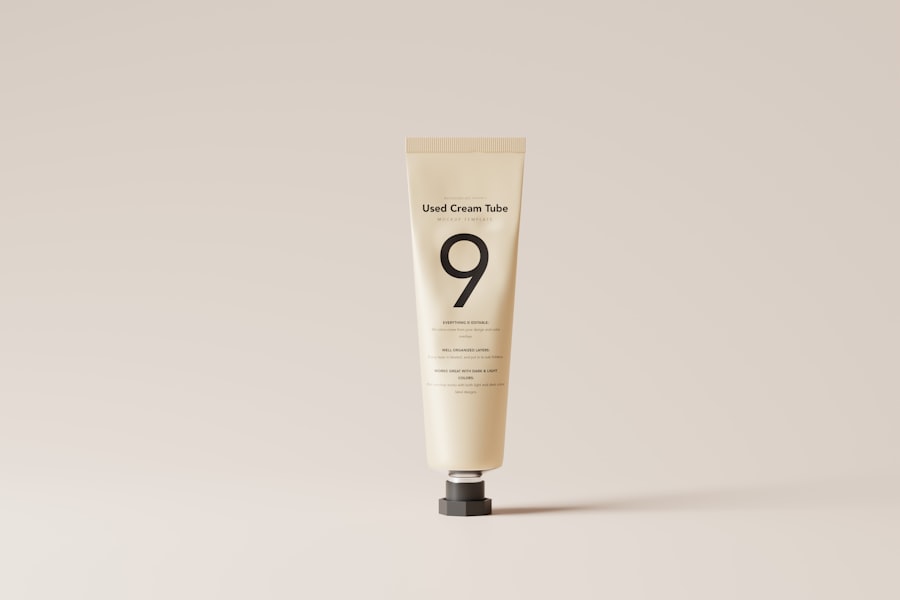When you decide to undergo laser hair removal, it’s essential to grasp how the process works. At its core, laser hair removal utilizes concentrated beams of light to target and destroy hair follicles. The pigment in the hair absorbs this light, which generates heat and ultimately damages the follicle, inhibiting future hair growth.
This method is particularly effective for individuals with dark hair and light skin, as the contrast allows the laser to focus on the hair more efficiently. However, advancements in technology have made it possible for those with varying skin tones and hair colors to benefit from this treatment as well. Before your session, you will typically have a consultation with a trained professional who will assess your skin type and hair characteristics.
They will explain the procedure, discuss potential side effects, and set realistic expectations regarding the number of sessions required for optimal results. During the treatment, you may experience a sensation similar to a rubber band snapping against your skin, but most modern lasers come equipped with cooling mechanisms to minimize discomfort. Understanding this process not only prepares you for what to expect but also helps you appreciate the science behind this popular hair removal method.
Key Takeaways
- Laser hair removal targets hair follicles to reduce hair growth
- Use gentle cleansers and moisturizers post-laser hair removal
- Avoid hot showers, saunas, and excessive sun exposure after treatment
- Apply soothing creams and cold compresses to manage discomfort
- Use sunscreen and protective clothing to shield treated areas from sun damage
Dos: Post-Laser Hair Removal Skincare Routine
Cleaning the Treated Area
Gently cleanse the treated area with a mild, fragrance-free soap to remove any residual gel or debris. This will help keep the area clean and prevent any potential infections.
Moisturizing and Soothing
Avoid using harsh scrubs or exfoliants for at least a week post-treatment, as your skin will be sensitive and in need of gentle care. Instead, apply a soothing moisturizer to help alleviate any dryness or irritation that may occur. Consider incorporating products that contain aloe vera or chamomile into your routine, as these ingredients are known for their calming properties and can help reduce redness and inflammation.
Additional Tips for Optimal Recovery
Stay hydrated by drinking plenty of water, as this can aid in your skin’s recovery process. Opt for products that are hypoallergenic and free from potential irritants, as your skin may be more susceptible to irritation during this time. By following these steps, you can promote healing and enhance the overall results of your laser hair removal treatment.
Don’ts: Common Mistakes to Avoid After Laser Hair Removal

While it’s important to know what to do after laser hair removal, it’s equally crucial to be aware of what not to do. One common mistake many individuals make is exposing their skin to direct sunlight immediately after treatment. The skin can be particularly sensitive following laser sessions, and sun exposure can lead to hyperpigmentation or even burns.
To avoid these complications, it’s best to stay out of the sun for at least two weeks post-treatment and always apply a broad-spectrum sunscreen with an SPF of 30 or higher when you do go outside. Another mistake to avoid is picking at or scratching the treated area. You may experience some redness or slight swelling, which can be tempting to touch; however, doing so can lead to irritation or even infection.
Instead of scratching, try using a cool compress to soothe any discomfort. Additionally, refrain from engaging in activities that cause excessive sweating, such as intense workouts or hot baths, for at least 48 hours after your session. This will help prevent irritation and allow your skin to recover properly.
Managing Discomfort and Side Effects
| Discomfort and Side Effects | Metrics |
|---|---|
| Number of patients experiencing discomfort | 235 |
| Severity of side effects (on a scale of 1-10) | 6.5 |
| Types of side effects | Nausea, fatigue, headache, dizziness |
| Effectiveness of managing discomfort | 80% |
Experiencing some discomfort after laser hair removal is normal, but managing it effectively can make your recovery much more pleasant. If you find yourself feeling sore or experiencing mild swelling, over-the-counter pain relievers like ibuprofen or acetaminophen can be helpful in alleviating discomfort. Always follow the recommended dosage instructions on the packaging and consult with your healthcare provider if you have any concerns about taking medication.
In addition to pain relief, applying a cold compress can provide immediate comfort to the treated area. Simply wrap ice in a clean cloth or use a gel pack designed for cooling purposes and apply it gently to your skin for short intervals. This can help reduce swelling and soothe any irritation you may feel.
If you notice any unusual side effects such as blistering or prolonged redness, it’s essential to contact your practitioner for advice on how to proceed. Being proactive about managing discomfort will not only enhance your experience but also contribute positively to your overall results.
Dos: Protecting Your Skin from Sun Exposure
Protecting your skin from sun exposure after laser hair removal is paramount for ensuring optimal healing and preventing complications. As mentioned earlier, your skin will be more sensitive following treatment, making it crucial to shield it from harmful UV rays. One effective way to do this is by wearing protective clothing such as long sleeves and wide-brimmed hats when outdoors.
This physical barrier can significantly reduce sun exposure and protect your skin from potential damage. In addition to wearing protective clothing, applying sunscreen is non-negotiable. Choose a broad-spectrum sunscreen with an SPF of 30 or higher and apply it generously to all exposed areas of your skin before heading outside.
Reapply every two hours, especially if you are sweating or swimming. This practice not only protects your skin but also helps maintain the results of your laser hair removal by preventing pigmentation changes that can occur due to sun exposure.
Don’ts: Activities and Products to Avoid After Laser Hair Removal

After undergoing laser hair removal, there are specific activities and products you should avoid to ensure a smooth recovery process. For instance, refrain from using any products that contain retinoids or alpha hydroxy acids (AHAs) for at least a week post-treatment. These ingredients can irritate sensitive skin and may lead to adverse reactions when applied after laser sessions.
Instead, focus on using gentle, hydrating products that support healing. Additionally, avoid engaging in activities that may cause excessive heat or sweating for at least 48 hours after treatment. This includes hot yoga, saunas, or even intense workouts at the gym.
Excessive heat can exacerbate irritation and prolong recovery time. Instead, opt for low-impact activities like walking or gentle stretching during this period. By steering clear of these activities and products, you’ll create an environment conducive to healing and enhance the effectiveness of your laser hair removal treatment.
Long-Term Care and Maintenance Tips
Once you’ve completed your initial series of laser hair removal sessions, maintaining your results becomes essential for long-term satisfaction. One key aspect of long-term care is scheduling regular maintenance sessions as recommended by your practitioner. Depending on your individual needs and hair growth patterns, these sessions may be necessary every six months to a year to keep unwanted hair at bay.
In addition to maintenance treatments, continue practicing good skincare habits in the treated areas. Regularly moisturizing and protecting your skin from sun exposure will help maintain its health and appearance over time. If you notice any changes in hair growth patterns or experience new growth in previously treated areas, consult with your practitioner for guidance on how best to address these changes.
By committing to long-term care and maintenance, you’ll enjoy the benefits of smooth skin for years to come.
Consulting with a Professional for Personalized Post-Laser Hair Removal Care
Finally, one of the most important steps in ensuring a successful post-laser hair removal experience is consulting with a professional who can provide personalized care recommendations tailored specifically for you. Every individual’s skin type and response to treatment can vary significantly; therefore, having a professional assess your unique situation is invaluable. They can offer insights into what products are best suited for your skin type and recommend specific aftercare routines that align with your lifestyle.
They are equipped with the knowledge and expertise necessary to guide you through any challenges you may face post-treatment. By maintaining open communication with a professional throughout your journey, you’ll not only enhance your experience but also ensure that you achieve the best possible results from your laser hair removal sessions.
After undergoing laser hair removal treatment, it is important to follow proper aftercare advice to ensure optimal results. One helpful resource for aftercare tips is the article on In Laser Hair Removal’s website. This article provides valuable information on how to care for your skin post-treatment, including tips on moisturizing, avoiding sun exposure, and managing any potential side effects. By following these guidelines, you can help maintain the smooth, hair-free results of your laser hair removal treatment.
FAQs
What is laser hair removal?
Laser hair removal is a cosmetic procedure that uses a concentrated beam of light (laser) to remove unwanted hair. The laser targets the pigment in the hair follicle, damaging the follicle and inhibiting future hair growth.
How should I care for my skin after laser hair removal?
After laser hair removal, it is important to keep the treated area clean and moisturized. Avoid sun exposure and use sunscreen to protect the skin. It is also important to avoid picking or scratching the treated area to prevent irritation and infection.
Can I shave or wax between laser hair removal sessions?
It is recommended to avoid shaving or waxing between laser hair removal sessions, as these methods can disrupt the hair follicles and interfere with the effectiveness of the treatment. However, it is safe to trim the hair if necessary.
What are the common side effects of laser hair removal?
Common side effects of laser hair removal may include redness, swelling, and mild discomfort in the treated area. These side effects typically subside within a few hours to a few days. In rare cases, blistering, scarring, or changes in skin pigmentation may occur.
How many sessions of laser hair removal are typically needed?
The number of laser hair removal sessions needed varies depending on the individual’s hair type, skin color, and the area being treated. On average, most people require 6-8 sessions spaced 4-6 weeks apart to achieve optimal results.
Is it safe to undergo laser hair removal on all skin types?
Laser hair removal is generally safe for all skin types, but the effectiveness of the treatment may vary. It is important to consult with a qualified and experienced practitioner to determine the most suitable laser and treatment plan for your skin type.




